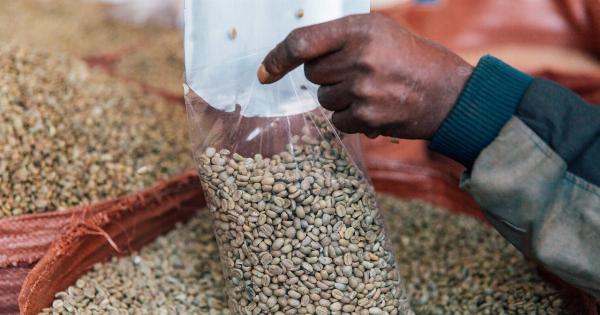One of the key factors affecting the sustainability of fish populations is the incorrect labeling of seafood products. It may seem like a minor issue, but the mislabeling of fish has far-reaching consequences for both the environment and consumers.
In this article, we will delve into the reasons why incorrect labeling impacts fish sustainability and explore the various implications of this problem.
The Importance of Properly Labeling Fish
Properly labeling fish serves multiple purposes. Firstly, it enables consumers to make informed choices regarding the seafood they purchase. Labeling information typically includes the species, origin, and whether the fish was caught or farmed.
This information allows individuals to support sustainable fishing practices and avoid purchasing endangered or overfished species.
Secondly, accurate labeling helps to ensure the traceability of seafood products. Illegal, unreported, and unregulated (IUU) fishing is a massive issue worldwide, and mislabeling can facilitate the laundering of illegally caught fish into the market.
By clearly identifying the species and origin of fish, it becomes easier for regulatory authorities to monitor and combat IUU fishing.
Risks Posed by Incorrect Labeling
Incorrect labeling of fish products can have significant negative consequences for fish populations and marine ecosystems. Let’s explore some of the key risks:.
1. Overfishing and Depletion of Fish Stocks
When fish species are mislabeled, it often masks the unsustainable fishing practices behind the scenes. For example, a species may be labeled as plentiful when, in reality, it is on the brink of collapse due to overfishing.
This misrepresentation can lead to increased demand for already vulnerable species, exacerbating the pressure on their populations and risking their survival.
2. Bycatch and Ecosystem Impacts
Incorrect labeling may result in consumers unknowingly purchasing seafood products that were caught using destructive fishing methods. These methods often cause significant bycatch, which refers to the unintentional catch of non-target species.
Bycatch can include endangered or protected species, as well as juvenile fish that have not reached reproductive age. This can disrupt the delicate balance of marine ecosystems and harm the overall biodiversity of our oceans.
3. Health Concerns
Mislabeling can also have health implications for consumers. For instance, some fish species may contain higher levels of mercury, PCBs, or other contaminants.
If a fish is mislabeled, consumers might unintentionally consume a species that they were explicitly trying to avoid due to health concerns. Proper labeling helps individuals make informed decisions about their seafood consumption and avoid potential health risks.
The Root Causes of Mislabeling
The mislabeling of fish products can occur at various points along the seafood supply chain. Understanding the root causes of this problem is crucial for developing effective solutions. Some of the main causes of mislabeling include:.
1. Lack of Regulation and Enforcement
Inadequate regulation and enforcement measures create an environment where mislabeling can thrive. Without strict monitoring, there is little incentive for seafood companies to accurately label their products.
Therefore, governments need to implement robust regulations and invest in enforcement to ensure compliance with labeling requirements.
2. Complexity of the Supply Chain
The seafood supply chain can be long and complex, with multiple actors involved, including fishermen, processors, distributors, and retailers. At each stage of the supply chain, the potential for mislabeling exists.
As fish change hands multiple times before reaching consumers, it becomes easier for intentional or unintentional mislabeling to occur. Increasing traceability and transparency throughout the supply chain can help mitigate this issue.
3. Economic Incentives
Another factor contributing to mislabeling is the economic incentive for companies to substitute high-value fish species with cheaper alternatives.
This practice, known as “fish fraud,” allows companies to increase their profit margins by deceiving consumers. Stricter penalties and the implementation of DNA testing can help deter fish fraud and ensure accountability within the industry.
The Way Forward: Addressing Mislabeling
Combating the mislabeling of fish requires a collective effort from governments, regulatory bodies, industry stakeholders, and consumers. Here are some steps that can be taken:.
1. Strengthening Regulations and Enforcement
Governments should establish clear and stringent labeling requirements for seafood products. These requirements should include accurate species identification, information on the fishing method employed, and the origin of the fish.
Robust enforcement measures, including inspections and penalties, should be implemented to ensure compliance.
2. Enhancing Traceability
Improving traceability throughout the seafood supply chain is crucial for combating mislabeling. Technologies such as blockchain can be utilized to create a transparent record of each step in the journey of a fish from ocean to plate.
By enhancing traceability, it becomes easier to identify and address any instances of mislabeling.
3. Consumer Education and Awareness
Empowering consumers with knowledge is essential to combat mislabeling. Education campaigns can raise awareness regarding the importance of proper labeling and inform consumers about the potential risks associated with mislabeled seafood.
By making informed choices, consumers can drive demand for accurately labeled fish, promoting sustainable fishing practices.
Conclusion
Incorrect labeling of fish products has a significant impact on fish sustainability, threatening marine ecosystems and consumer health.
By addressing the root causes of mislabeling and implementing robust solutions, we can protect fish populations, reduce bycatch, and empower consumers to make sustainable seafood choices. It is vital for governments, regulatory bodies, and industry stakeholders to collaborate and prioritize accurate labeling to ensure the long-term viability of our oceans.






























